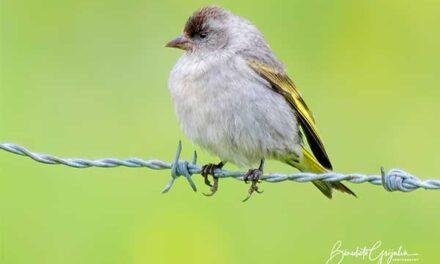Picture Gallery of The Bushtit
Bushtit
- Order: Passeriformes
- Family: Aegithalidae
- Genus: Psaltriparus
The Sociable and Small New World Bird
The Bushtit (Psaltriparus minimus) is a charming and sociable bird that belongs to the family of long-tailed tits (Aegithalidae). Known for its drab-gray plumage and long tail, this tiny bird is a common resident throughout the western parts of North America and the highlands of Central America. With its gregarious nature, the Bushtit is often spotted in flocks of varying sizes, ranging from 3 to more than 40 individuals, or even in mixed-species flocks.
Distinctive Features and Habitat
The Psaltriparus minimus is recognized for its unassuming appearance, characterized by drab-gray feathers that blend well with its surroundings. Despite its small size, its long tail sets it apart from similar-sized birds in the region. This tail serves various functions, including providing balance during acrobatic maneuvers and acting as a communication tool within the flock.
Tthrives in various habitats, favoring woodlands, chaparral, and scrubby areas. It exhibits notable adaptability to urban environments and can be found in parks, gardens, and residential areas. Its versatility in habitat selection contributes to its widespread distribution.
Social Behavior and Flocking
One of the most endearing traits of the species is its highly social nature. Witnessing these tiny birds traveling together in close-knit flocks is not uncommon. These flocks are composed of conspecifics, meaning individuals of the same species. They can consist of a few members to large gatherings of over 40 birds. Their cohesive nature within the flock allows them to effectively communicate, forage, and defend against predators.
Range and Year-Round Presence
The species range spans North America’s western regions and Central America’s highlands. It is a permanent resident in these areas, remaining there year-round. Its adaptability to various climates and habitats contributes to its ability to thrive in diverse ecosystems, from the temperate forests of the north to the highland regions of Central America.
Observing the Bushtit
Observing this bird in its natural habitat is a delightful experience for birdwatchers and nature enthusiasts. Their constant activity and cheerful chirping add vibrancy to the surroundings. Patient observers may witness these agile birds foraging for insects and spiders, a primary component of their diet, among the vegetation.
Conclusion
The Bushtit, a small and sociable bird, holds a unique place in the New World avian family. With its drab-gray plumage, long tail, and gregarious nature, it is a common resident in the western parts of North America and the highlands of Central America. The species’ ability to form close-knit flocks and adapt to various habitats showcases its resilience and charm. Whether in woodlands, urban gardens, or mixed-species flocks, this unassuming bird brings joy and liveliness to its surroundings, leaving a lasting impression on those who enjoy observing it in its natural habitat.









